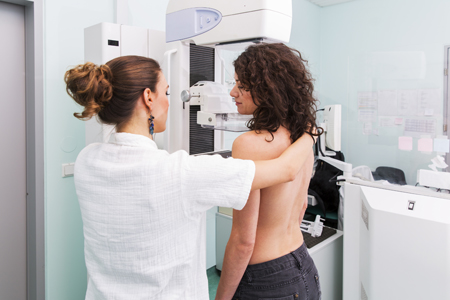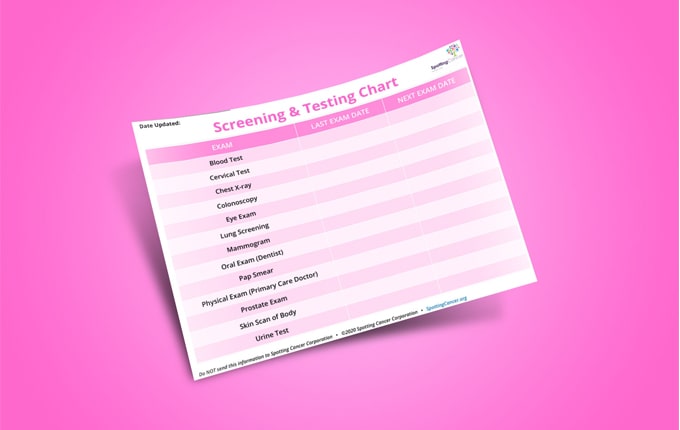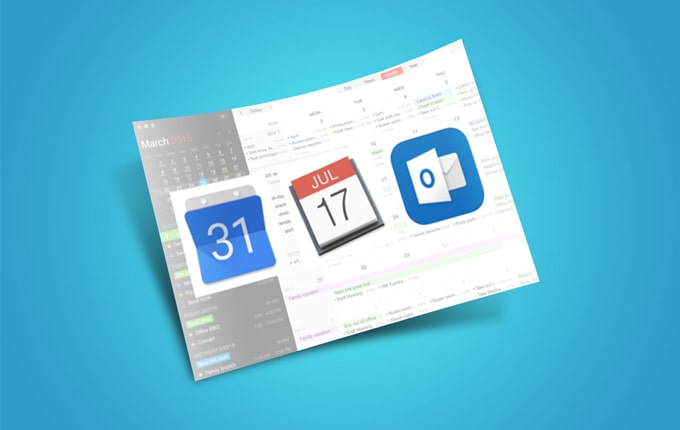Mammogram (80)
Cancer screening & testing helps you #SpotandSurvive

A Mammogram is an X-ray picture of your breast. There are two types of mammograms: screening and diagnostic. (80) Screening mammograms are used to check for breast cancer in women who have no signs or symptoms of the disease. Diagnostic mammograms are used to check for breast cancer after a lump or other sign of the disease has been found. Mammograms miss about 20% of breast cancer at the time of screening, giving false results mainly due to dense or fatty tissue. Breast implants can impact results as well.
Download Our Spot and Survive Guides Free Now!
Learn the signs to potentially save yours and your family’s life.
Screening Methods: (81)
There are two types of test methods: digital and conventional. The difference is how images are stored to date; no advantages have been found by using one of them. (82)
Screening mammograms usually involve two X-ray pictures (or images) of each breast. The X-ray images make it possible to detect tumors that cannot be felt. Screening mammograms can also find tiny deposits of calcium that sometimes indicate the presence of breast cancer. A mammogram is a good method to detect cancer early, thus increasing the possibility of successful treatment. There is no special preparation required.
Diagnostic mammograms require more X-rays to obtain views from several angles to get greater details. Women with implants must notify the facility conducting the tests to insure special procedures, if necessary, are followed.
Preparation:
There is no special preparation required before undergoing this procedure.
Watch this video to see what happens during a mammogram screening.
Source: British Columbia Cancer Agency
When:
Try to avoid scheduling your mammogram before or during your menstrual cycle, as this will make your mammogram more uncomfortable.
Having regular mammograms can lower your risk of dying from breast cancer. It is best to establish a screening program with your medical team who will consider your family history, your own health history, and the environment you live in. It is suggested by the medical community that if you are 50 to 74 years old, you have a screening mammogram every two years. If you are 40 to 49 years old or over 74, talk to your doctor about how often to get a screening mammogram.
Spot Cancer
Get reminder emails, tips, and resources to develop your spotting cancer habit when you join the Cancer Detection Squad

Take Action
Regular screening & testing is necessary to to spot cancer before it’s too late. Talk to your doctor or medical provider today to learn what cancer screening & testing is right for you.
you can
when you download and use our guides
Get the Screening & Testing Mammogram
Download the guide to help you understand how Mammograms work and to learn the best time to schedule a screening. Share with your friends and family to help raise awareness on the importance of early cancer detection.
Get the Screening & Testing Scheduling chart
Download the interactive Screening & Testing Scheduling chart to help you keep track of important screening and testing schedules. Download today!
Save a Body Monitoring and Screening & Testing schedule
Regular monitoring and testing is a life-saving habit. Save a Body Monitoring and Screening & Testing schedule to your Google Calendar or iCalendar to stay on track!
You're on Step 5

Step 1:
Signs & Symptoms
To monitor yourself for early cancer detection, you must know the cancer signs and symptoms. A listing of the various signs and symptoms are just a click away.

Step 2:
Body Monitoring
Cancer grows 24/7. Therefore, you must monitor your body to detect any abnormality between regular doctor visits or screenings. The tools and methods are described in this section.

Step 3:
Family History
Knowing and charting your family medical history will help your medical team as they develop a long-term wellness program suited to your unique needs.

Step 4:
Medical Team
Cancer is not self-healing. Therefore, when spotting a cancer sign or symptom, consider it a red flag that should cause you to consult your medical team immediately to determine if it is cancer or another illness.

Step 5:
Screening & Testing
Not all cancer signs and symptoms are visible. You should establish specific times for the various cancer screening and tests with your medical team.



